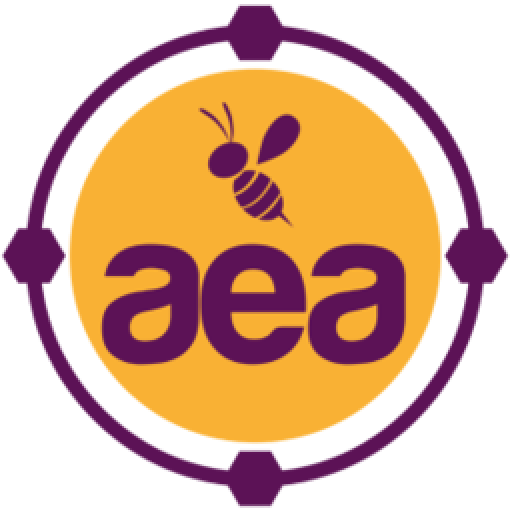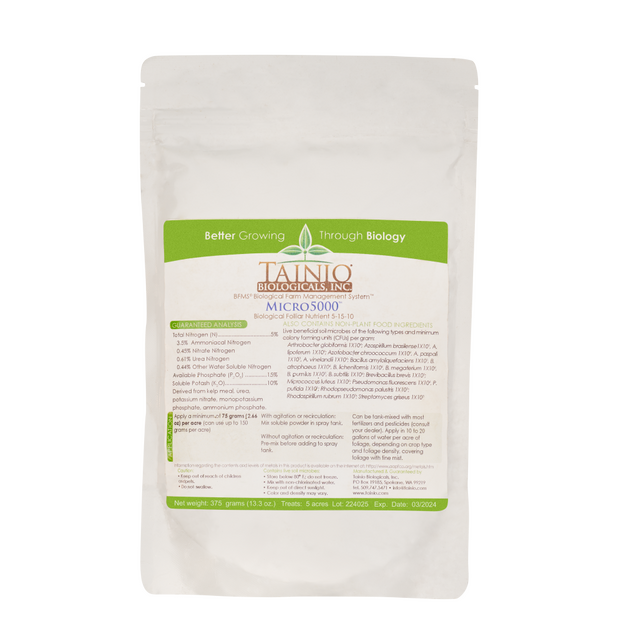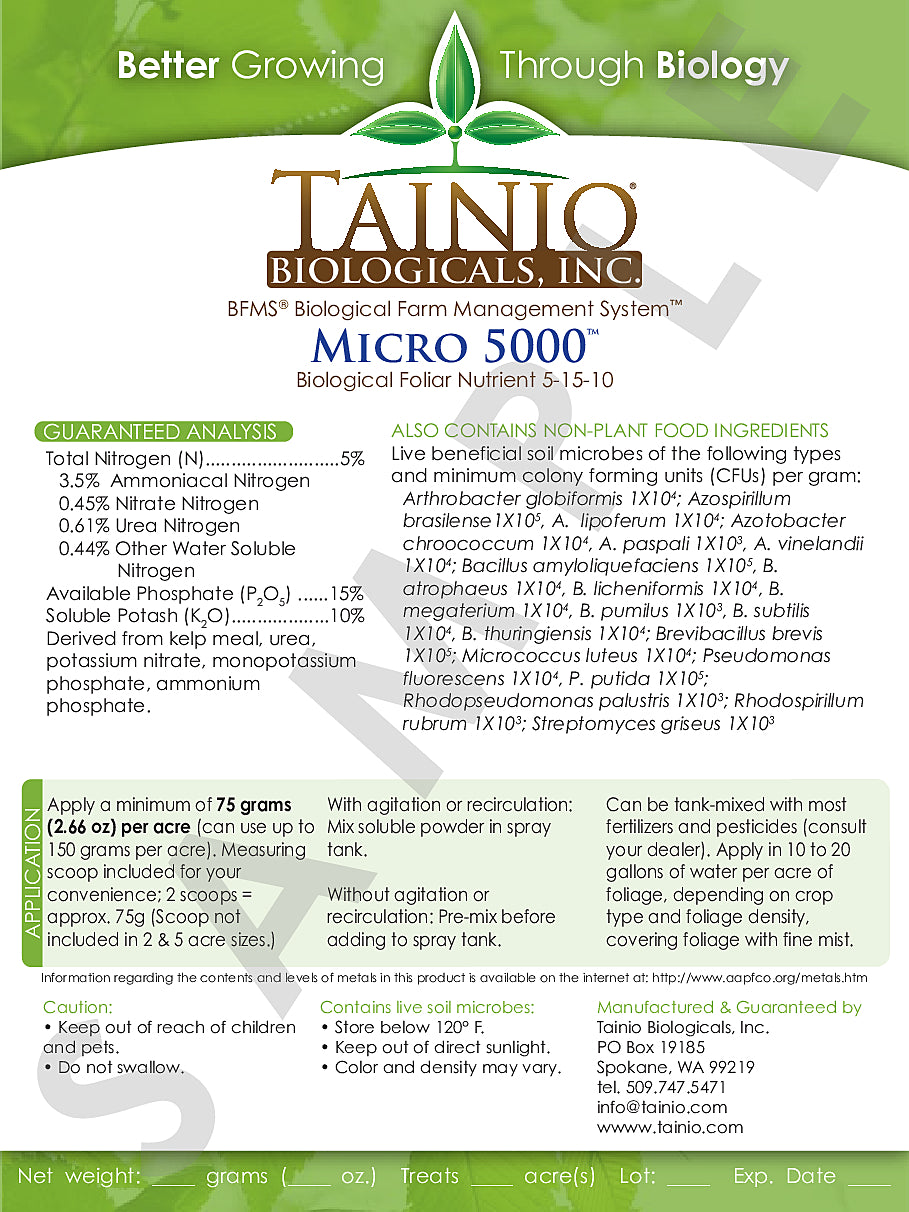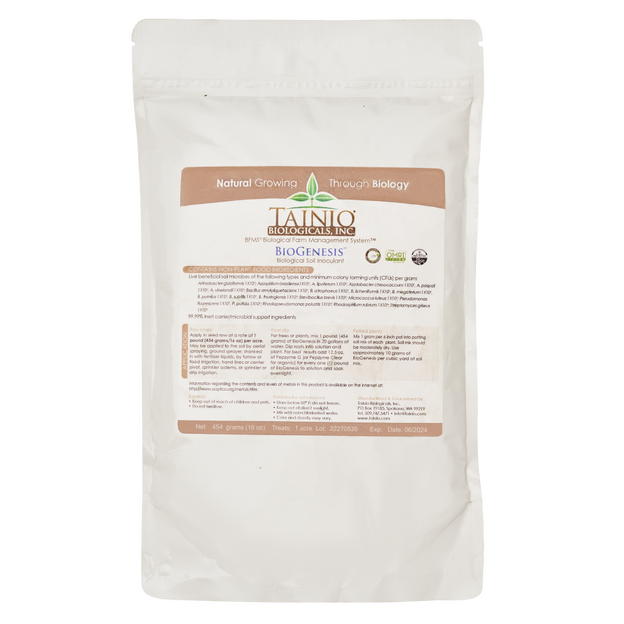Micro5000™
Biologically-enhanced foliar
Product Description
Micro5000 is a foliar fertilizer and inoculant package. Microbes on leaf surfaces can solubilize nutrients from foliar sprays along with nitrogen from the air to help enable these nutrients to be absorbed through the leaf, reducing the amount of supplemental nutrients needed. Note: Micro5000 is not for use in organic production. Organic growers should use Micro5000 Organic™ 1 acre = 75 grams
Features and Benefits
- 5-15-10 NPK
- can be used several times throughout the growing season
- Helps grow larger, more nutrient-dense fruit
- Helps grow produce with longer shelf life
- Heps grow thicker, stronger, greener turf
Application Rates
Apply a minimum of 75 grams (2.66 oz) per acre (can use up to 150 grams per acre).
Measuring scoop included for your convenience; 2 scoops = approx. 75g (Scoop not included in 2 & 5 acre sizes.).
Application Instructions
With agitation or recirculation: Mix soluble powder in spray tank.
Without agitation or recirculation: Pre-mix before
adding to spray tank.Can be tank-mixed with most fertilizers and pesticides (consult your dealer).
Apply in 10 to 20 gallons of water per acre of foliage, depending on crop type and foliage density, covering foliage with fine mist.
Ingredients
Guaranteed Analysis:
Total Nitrogen (N)… 5%
– 3.5% Ammoniacal Nitrogen
– 0.45% Nitrate Nitrogen
– 0.61% Urea Nitrogen
– 0.44% Other Water Soluble Nitrogen
Available Phosphate (P2O5)… 15%
Soluble Potash (K2O)… 10%
Derived from kelp meal, urea, potassium nitrate, monopotassium phosphate, ammonium phosphate.
Also Contains Non-Plant Food Ingredients:
Live beneficial soil microbes of the following types
and minimum colony forming units (CFUs) per gram:Arthrobacter globiformis 1X104; Azospirillum
brasilense1X105, A. lipoferum 1X104; Azotobacter
chroococcum 1X104, A. paspali 1X103, A. vinelandii
1X104; Bacillus amyloliquefaciens 1X105, B. atrophaeus 1X104, B. licheniformis 1X104, B. megaterium 1X104, B. pumilus 1X103, B. subtilis 1X104, B. thuringiensis 1X104; Brevibacillus brevis 1X105; Micrococcus luteus 1X104; Pseudomonas fluorescens 1X104, P. putida 1X105; Rhodopseudomonas palustris 1X103; Rhodospirillum rubrum 1X103; Streptomyces griseus 1X103





